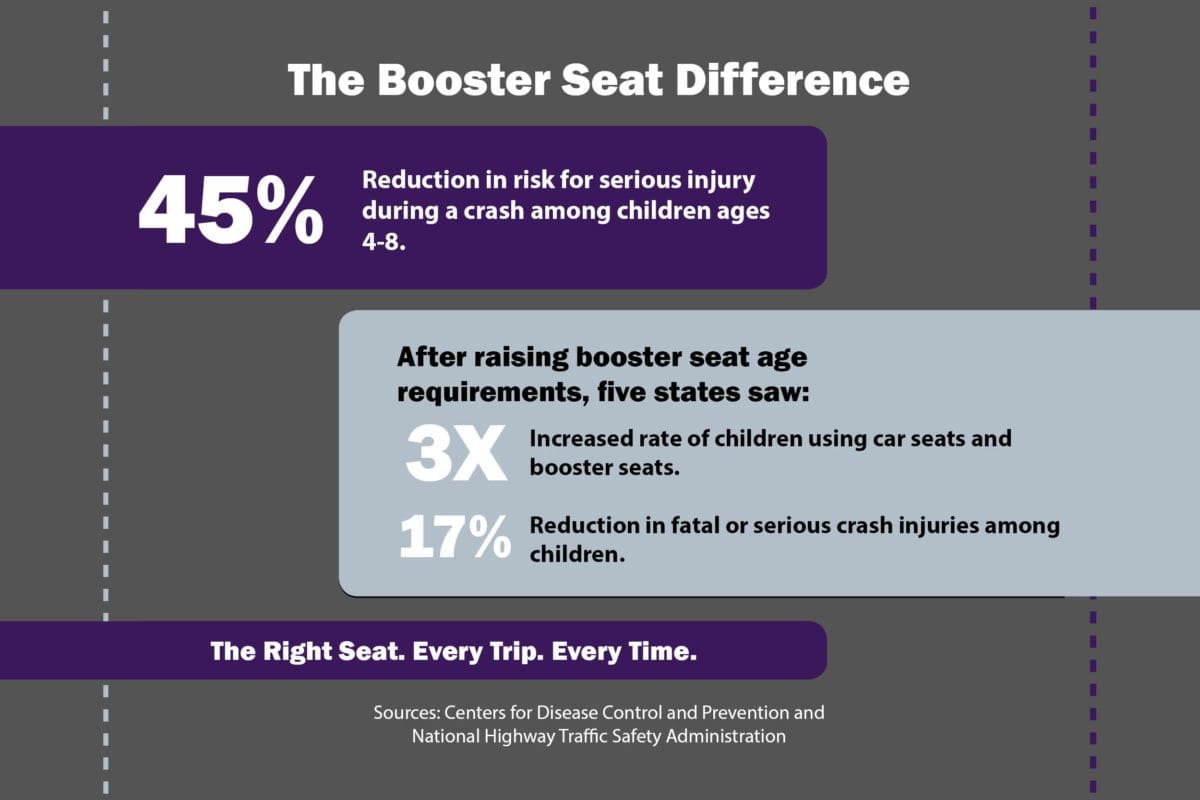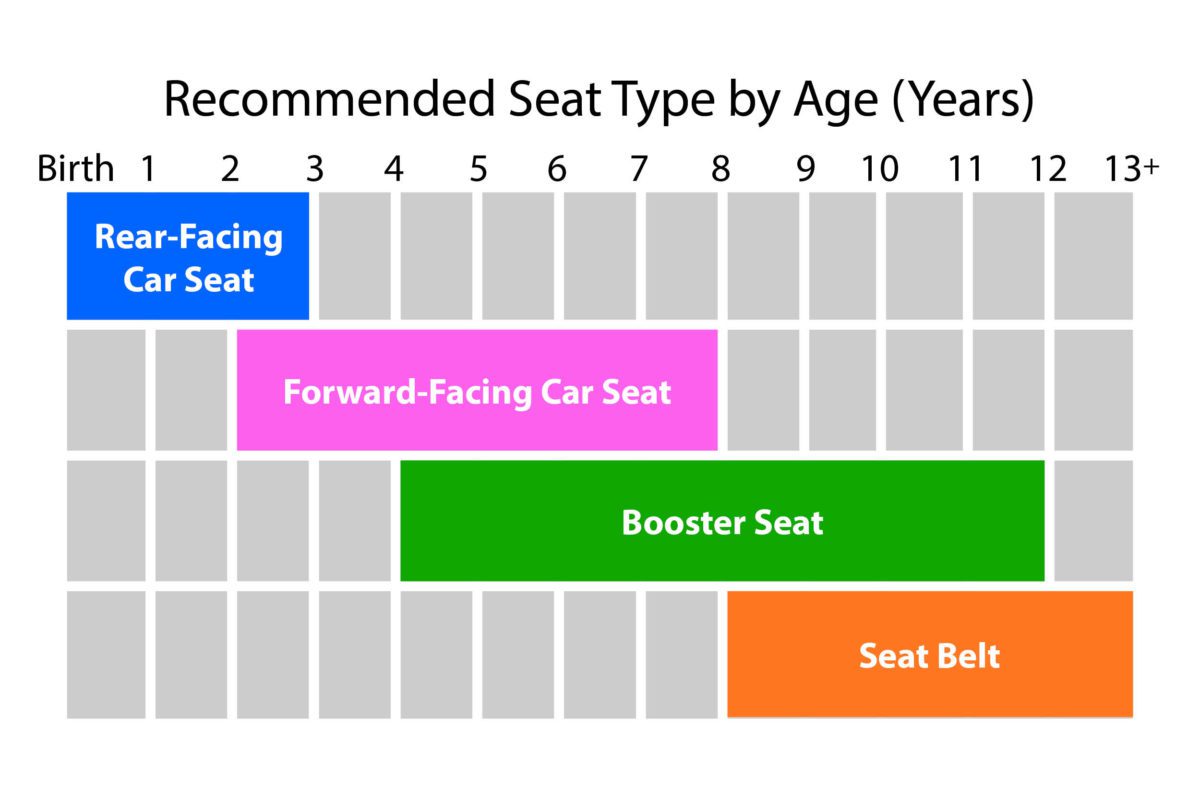
Use the Right Seat. Every Trip. Every Time.
Until your child is taller than 4′ 9″ (generally 8-12 years old), your vehicle’s seat belt will not fit correctly.
The right car seat or booster seat keeps your child in place so that all of your car’s safety features can work correctly during a crash.

Make sure your child uses the correct seat belt, booster seat, or car seat for every trip. And when you wear your seat belt too, it sets the example that safety is important.
This crash test shows how a lap belt alone isn’t enough protection for a 6-year-old child during a car crash. Booster seats allow your car’s safety features to be as effective as possible.

When shopping for car seats or booster seats, pay close attention to height and weight requirements. Check that your child has reached the maximum height or weight before moving on to the next type of seat. Never use second-hand car seats or booster seats and pay attention to car seat recalls.
When selecting a seat, ask:
Suggested ages are general guidelines, but height and weight are the most important factors when choosing a seat. The Insurance Institute for Highway Safety Highway Loss Data Institute also conducts booster seat evaluations for additional help.






This video playlist from NHTSA includes instructions for installing various types of car seats and booster seats. Use the menu in the top corner of the video player to browse different seat types.
When installing a booster seat, follow the owners’ manual for your booster seat as well as your vehicle regarding “child restraint systems.” These guidelines will provide instructions on seat placement and angle. Booster seats must be used with a lap and shoulder belt, not a lap belt alone.
In the Seattle area, Seattle Children’s Hospital regularly offers free car seat checks to ensure proper installation and fit.
Specific car seats vary, but National Highway Traffic Safety Administration installation instruction videos offer useful guides for the most common types.
In the car, where should I install my booster seat?
Which type of booster seat do I need?
Source: Seattle Children’s Hospital
Get free help ensuring your car seats or booster seats are installed and fitted correctly.
Car seats and booster seats may be recalled due to documented mechanical problems, mislabeling that can lead to confusion, incorrect user instructions or other safety concerns.
What Can I Do?
It’s the Law. In Washington state, you can get a traffic ticket if your child is not properly restrained. Per Washington’s Child Passenger Restraint Law, the vehicle’s driver can get a ticket if occupants under age 16 are not properly restrained. Law enforcement will use the following guidelines to decide whether the child is properly restrained:
The above requirements became effective January 1, 2020.
For the best protection, a child should remain in each stage of the restraints until they reach the maximum height and weight based on the manufacturer’s instructions.
Outside of Washington, laws regarding child safety restraints vary by state. The Governors Highway Safety Association offers a state-by-state overview of restraint laws.
This website is also available in Spanish. Booster Seat information in English, Spanish, Amharic, Chinese, Oromo, Somali, and Vietnamese is available from Seattle Children’s Hospital.
This web site is provided for educational and informational purposes only and does not constitute providing medical advice or professional services. The information provided should not be used for diagnosing or treating a health problem or disease, and those seeking personal medical advice should consult with a licensed physician. No physician-patient relationship is created by this web site or its use. Neither HIPRC, the University of Washington, nor its employees, nor any contributor to this web site, makes any representations, express or implied, with respect to the information provided herein or to its use.